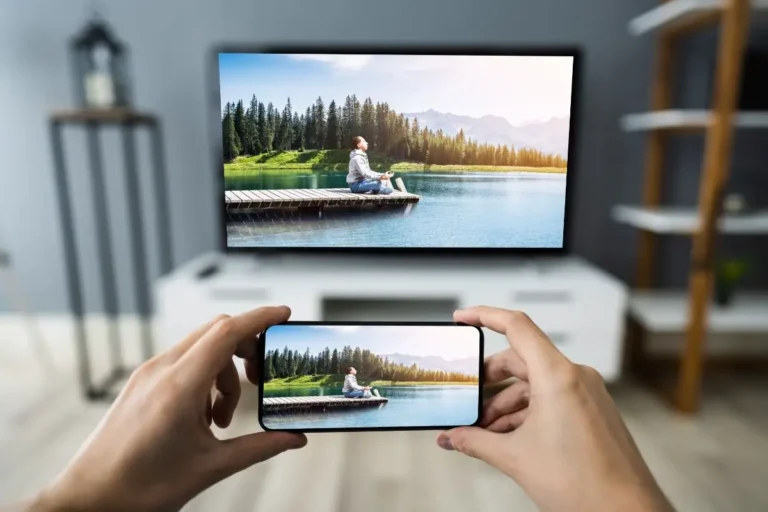The Ultimate Solution for Casting Media to Multiple TVs
In today’s interconnected world, the ability to share and stream media has become an integral part of our daily lives. Whether it’s for a family movie night, a business presentation, or a gaming session with friends, the demand for casting media to multiple TVs has never been greater. Fortunately, technology has kept pace with this demand, offering us a myriad of solutions. In this article, we will explore the ultimate solution for casting media to multiple TVs, and how it has evolved to cater to our growing needs.
The Need for Multi-TV Casting
As the saying goes, “Sharing is caring,” and nowhere is this more evident than in our entertainment and work environments. The need to cast media to multiple TVs arises from various scenarios, such as:
- Family Entertainment: When you want to enjoy a movie or a TV show together with your family on different TVs across the house.
- Business Presentations: For organizations, casting presentations to multiple screens during meetings and conferences is essential for ensuring all participants have a clear view of the content.
- Gaming Parties: Gamers often want to display their gameplay on multiple screens simultaneously, providing a more immersive experience for all involved.
- Educational Institutions: Teachers and trainers use multi-TV casting to ensure students in larger classrooms can view educational content without any visibility issues.
- Sports Bars: Broadcasting multiple sports events on various TVs allows patrons to choose which game they want to watch.
Given these diverse needs, finding the ultimate solution for casting media to multiple TVs has become paramount.
Challenges of Multi-TV Casting
Before diving into the solution, it’s crucial to understand the challenges that come with casting media to multiple TVs:
- Latency: Synchronizing content across multiple screens can be challenging, especially when a delay is noticeable. This can be frustrating for gamers and detract from the viewing experience.
- Compatibility: Ensuring compatibility across different TV models, operating systems, and devices can be a headache, as not all devices are created equal.
- Ease of Use: The solution must be user-friendly for both tech-savvy individuals and those less familiar with technology.
- Cost: Many solutions can be expensive, making it a less viable option for budget-conscious users.
The Ultimate Solution: A Multi-TV Casting Ecosystem
The ultimate solution for casting media to multiple TVs is to create an ecosystem that integrates multiple technologies, providing a seamless and robust casting experience. Let’s break down the key components of this solution:
1. Streaming Devices:
The heart of the ecosystem is a set of streaming devices connected to each TV. These can be smart TVs, streaming sticks, or set-top boxes like Roku, Apple TV, or Amazon Fire TV. Ensure all devices are on the same network for a smooth casting experience.
2. Centralized Casting Platform:
A centralized casting platform acts as the control center, allowing users to select the content they want to cast to multiple TVs. This platform can be a mobile app or software on a computer, and it should be user-friendly and support various media types.
3. Synchronization Technology:
To overcome latency issues, the ecosystem should incorporate synchronization technology that ensures content appears simultaneously on all TVs. Low-latency casting ensures that gamers have a consistent experience and that presentations run smoothly.
4. Compatibility Across Devices:
The casting platform must be compatible with a wide range of devices, including iOS, Android, and web browsers. This ensures that everyone can participate in the casting experience, regardless of the devices they own.
5. Cost-Effective Options:
To cater to budget-conscious users, consider cost-effective streaming devices and casting platforms. Many streaming devices are reasonably priced, and there are free or low-cost casting platforms available.
Popular Solutions:
Several solutions and devices in the market offer this multi-TV casting ecosystem. Notable examples include Google Chromecast, Amazon’s Alexa and Fire TV devices, and Apple’s AirPlay. Each of these provides users with the ability to cast media to multiple TVs seamlessly and efficiently.
Conclusion
Casting media to multiple TVs is no longer a luxury but a necessity in our interconnected world. The ultimate solution lies in creating a multi-TV casting ecosystem that addresses challenges like latency, compatibility, ease of use, and cost-effectiveness. By embracing this ecosystem, you can ensure a smooth and enjoyable multi-TV casting experience for various scenarios, from family entertainment to business presentations and beyond. As technology continues to evolve, so too will the possibilities for multi-TV casting, making it an exciting field to watch in the coming years.
